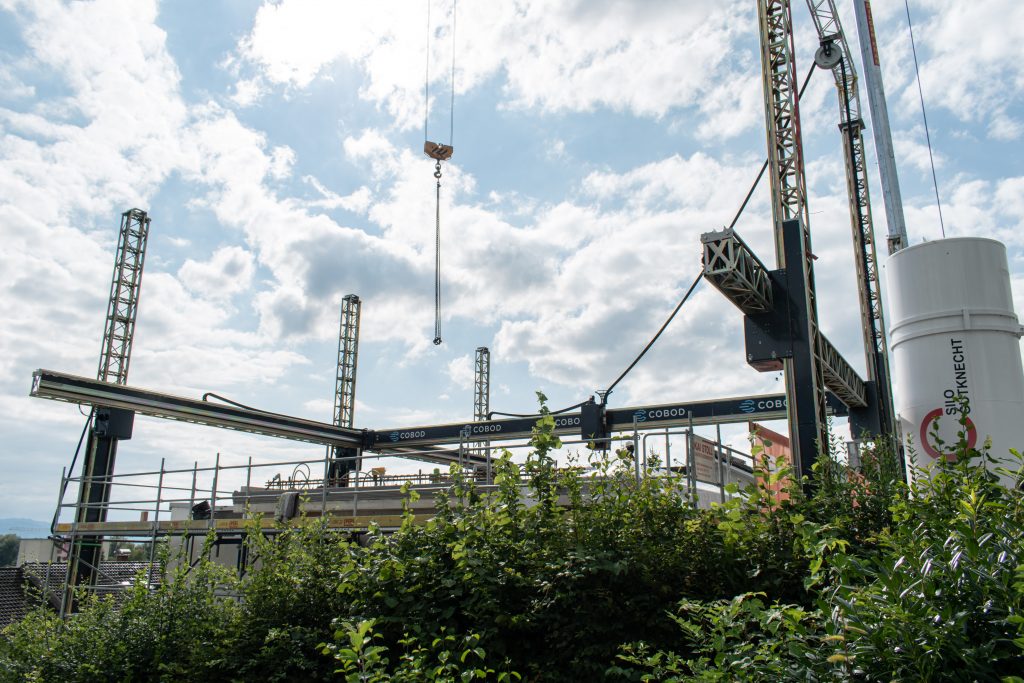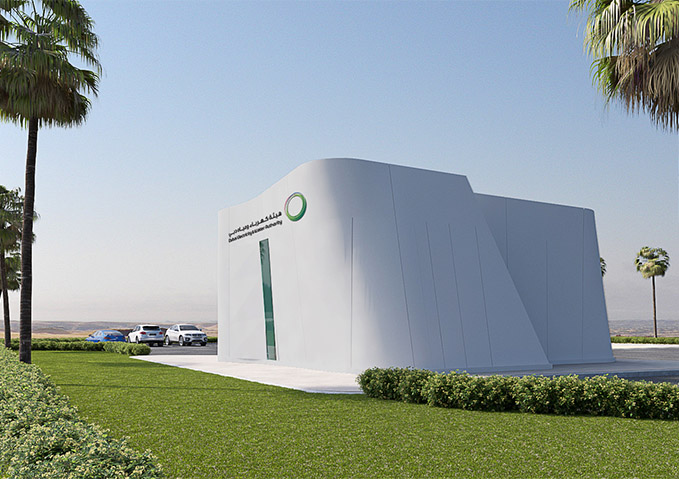Recent articles on 3D printing in construction have sparked a lively debate. Igniting that conversation was a paper on the potential benefits of concrete 3D printing. The co-author of that paper is Mustafa Batikha, an Assistant Professor at Heriot-Watt University.
Published last year, the study found that if a two-story structure built via precast concrete in the UAE had been 3D printed using a three-leaf printed cavity wall instead, the contractors’ material costs would’ve actually risen 44%.
This was due primarily to the expensive concrete needed for the build, as it was estimated that the proposed 3D printing method would be cheaper to carry out. Contrary to the often-cited eco-friendly benefits of the technology, the paper also showed that adopting it would only yield marginal sustainability gains.
Since then, firms like COBOD, Apis Cor, and Black Buffalo 3D, have challenged the concrete 3D printing paper, in particular, the practicality of the simulated build on which its findings are based. However, Batikha has now reached out to 3D Printing Industry with the following article, to explain how he reached his findings, and his intention not to suggest that “academia and industry are moving in different directions.”
“I prefer not to address each criticism directly, but I have made recommendations for the industry. If they don’t take them, I don’t think 3D concrete printing will spread in the future,” begins Batikha. “I truly believe that academia and the industry must work together to support the benefits of 3DCP technology.”

3D Concrete Printing: Recommendations for the 3D Printing Industry
By Mustafa Batikha, Assistant Professor, Heriot-Watt University.
3D Concrete Printing (3DCP) has attracted considerable attention in the construction industry because of its ability to shape concrete in a way that allows it to meet architectural geometric demands without formwork. As a result, some countries, such as the UAE, have made 3DCP central to their strategic plan for future construction. However, the implementation of 3DCP in buildings is still modest.
Our research, undertaken by Heriot-Watt University, B3G Engineering and Equipement Boni, has resulted in a paper that shows how 3DCP offers benefits such as low-cost, sustainability, and time savings compared to four other current construction techniques (as can be seen below). This is in addition to the great enhancements in health and safety that 3DCP could also bring to the construction site.

However, 3DCP is also faced with many challenges. When it comes to material formulation, concrete mixtures have to conform to certain criteria in flowability, extrudability, buildability and compressive strength, as well as stability at the fresh concrete stage. Moreover, the type of printer, whether a gantry girder or a robotic arm, plays a vital role in selecting the ingredients of the concrete mix deployed.
Print speed is also a key parameter when designing a concrete mix, while off-site printing requires a mixture which is not the same as in on-site printing cases. This results in a noticeable variability in the mixtures used in both research and practical applications, but the proportion of cement in printed concrete is still high, hindering sustainability efforts.
Although utilizing Supplementary Cementitious Materials (SCMs) to replace this cement could be a solution, this procedure will no longer be viable for widespread use, as planned for 3DCP, because of the very limitation of SCMs in relation to industry demand. Research also suggests the need to start investing in calcined clay and limestone powder filler to replace cement as they are widely available.

System and standardization issues
Currently, adding steel reinforcement to printed structural elements is common practice, because building authorities do not have any specific standards to validate the design of an unreinforced 3DCP structure. What’s more, when steel reinforcement is used, it ruins the benefits of 3DCP as a cheaper, faster, safer, and more sustainable construction technique.
In a practical example of this, BESIX successfully printed an unreinforced halfway house in Abu Dhabi, however the building authorities still refuse to encourage this practice, until a design standard has been put in place.
Another aspect of this is wall configuration, as their printed shape needs optimization to reduce material wastage and moderate the temperature inside the building. Using a cavity wall of two leaves is a common practice in the printing market, which results in reduced printed concrete usage and several advantages for 3DCP, as indicated in one of our studies.
During another study, we found it possible to integrate a three-leaf printed cavity wall into a building for maintaining its internal temperature, at a similar monetary and CO2 emission cost to precast construction, but at a reduced lead time of 34%. Moving forwards, the role of a wall’s geometric shape in ensuring the advantages of 3DCP, should be an area of great interest for researchers.
Although off-site printing is the preferred choice for 3DCP companies to ensure print quality, their time and cost invested in the transportation, erection, and assembly of printed elements on-site are considerable. On-site printing is ideal for the massive implementation of 3DCP in buildings. This brings us back to the first question about the material design and printer type that’s required to proceed with on-site construction.
System format plays a crucial role in build quality and mix design. A robotic-arm printer may be more appropriate for achieving an accurate architectural shape, such as a facade or small building. By contrast, in large-built areas, a gantry girder printer may be more efficient, because its system has lower operation and maintenance costs and is easier to operate. Using a robotic arm is estimated to double the cost of construction, thus the future building 3D printers could be in gantry girder machines.

Progressing 3D printing in construction
In future, the challenge lies in how to print parts under flexure (e.g., slabs) with minimal steel reinforcement. When it comes to multi-story buildings, even though companies like Winsun have previously announced the 3D printing of a five-story apartment building, most printed houses are still one or two-story buildings. I believe the future of 3DCP will focus on the potential to construct these under different loading scenarios, for example, under gravity, wind, or seismic conditions.
The researchers’ findings are detailed in their papers. The first was titled “3D Concrete Printing for Sustainable & Affordable Housing Construction-Comparative Study,” and co-authored by Mustafa Batikha and Moiz Ul Fazal.
The second was titled “3D concrete printing for sustainable and economical construction: A comparative study,” and co-authored by Mustafa Batikha, Rahul Jotangia, Mohamad Yasser Baaj, and Ibrahim Mousleh.
To stay up to date with the latest 3D printing news, don’t forget to subscribe to the 3D Printing Industry newsletter or follow us on Twitter or liking our page on Facebook.
For a deeper dive into additive manufacturing, you can now subscribe to our Youtube channel, featuring discussion, debriefs, and shots of 3D printing in-action.
Are you looking for a job in the additive manufacturing industry? Visit 3D Printing Jobs for a selection of roles in the industry.
Featured image shows COBOD’s BOD2 3D printer in the process of creating the “world’s first” 3D printed home extension. Photo via PERI AG.



